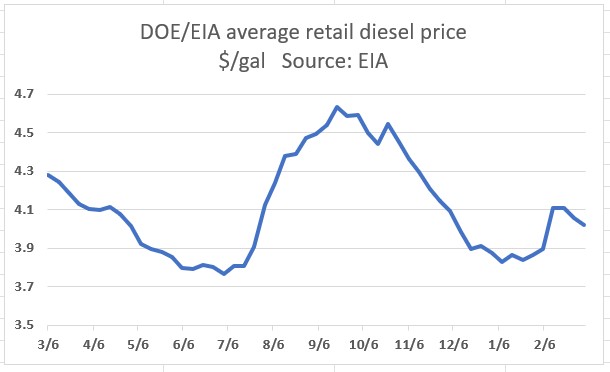The past year has offered a blend of subtle declines and notable changes in the oil and diesel markets, particularly relevant for fuel jobbers. Let’s delve into the evolution of these markets, highlighting the key factors at play and the implications for those at the heart of fuel distribution.
Crude Oil: A Gentle Ebb
Crude oil prices have experienced a slight decrease over the last year, with West Texas Intermediate (WTI) showcasing a minor drop of approximately 2.2%. This movement occurred despite significant output cuts by OPEC+, a substantial rise in U.S. production, and increased output from countries like Guyana and Brazil. The international benchmark, Brent crude, also saw a modest decline of 4%.
Diesel: A Steeper Descent
More pronounced than crude, diesel prices have dipped further, decreasing by around 6% as indicated by the Department of Energy/Energy Information Administration (DOE/EIA) price. This divergence between crude and diesel prices, despite being historically linked, points to a dynamic shift in the diesel market that fuel jobbers must navigate.

Factors Influencing Diesel Prices
- Market Dynamics: The spread between crude and diesel prices has been notably higher than historical norms for several years, impacting the translation of crude price declines into diesel price reductions at the pump.
- Supply and Demand: Changes in the global diesel supply, including fluctuations in Russian diesel supplies post-Ukraine invasion and adjustments in refining capacity, have influenced diesel prices.
- Renewable Diesel Impact: The rising capacity of renewable diesel in the U.S. is reshaping the market, even as it doesn’t fully offset conventional diesel output lost to refinery closures.
Implications for Fuel Jobbers
For fuel jobbers, understanding these market dynamics is crucial for navigating purchasing strategies and optimizing supply chains. The gap between crude and diesel prices, alongside the factors contributing to diesel’s steeper price fall, offers both challenges and opportunities. Adapting to the changing landscape, from supply chain adjustments to shifts in consumer demand for alternative fuels, will be key to maintaining competitiveness and profitability.
While the crude oil market has shown resilience, the diesel market presents a more complex scenario, influenced by a variety of factors from global production changes to shifts towards renewable fuels. For fuel jobbers, staying informed and agile in response to these changes will be essential for navigating the future of fuel distribution.


